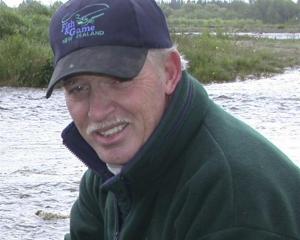
Then there are the kakapo.
More known for general weirdness as a chunky nocturnal ground parrot, the kakapo are a little less graceful and slightly more likely to land in the Wildlife Hospital after an accidental bump in the night.
Our current kakapo patient, Alison, is in hospital for a serious injury to her left eye.
While we can’t say for certain what caused it, it’s plausible that she was hustling through thick native bush one evening, and ran right into a stick.
Eye injuries in birds can be quite tricky, and Alison’s is no exception.
Initially, the vet team was focused on getting her supportive care, since the injury was clearly causing her pain, and getting her weight back up.
She certainly hadn’t felt like foraging when her eye was hurting.
Once she had been stabilised and was feeling better, the vets focused on evaluating the extent of the eye injury, which required specialty equipment.
Thankfully, Humanimals in South Dunedin was kind enough to lend us its veterinary tonometer, a machine that measures pressure in eyes.
You’re probably familiar with the human version, which is the ‘‘puff test’’ your optometrist gives you to check for glaucoma at your annual exam.
The veterinary version is slightly different, and actually gently touches the eye, giving a pressure reading. We sedate Alison lightly for this procedure, and bribe her back to our favour with a few macadamia nuts afterwards.
As there isn’t a lot known about kakapo eyes, the vet team first measured her healthy right eye to get a baseline pressure reading, and has been checking the left every couple of weeks to monitor changes.
Unfortunately, Alison no longer has vision in her injured eye, and she will not recover it, but it’s still possible for the eye to become healthy enough for her to keep it.
If the pressure stabilises, and it’s no longer causing her any pain, then surgery to remove the eye can be avoided.
The risks with the surgery are high enough that the vet team will do this only if absolutely necessary.
Parrots are brilliantly adaptable, and being blind in one eye, or only having one, won’t be a particular challenge for Alison when she heads back to her home island.
We just hope that she gives sticks a wide berth with her whole right side.







